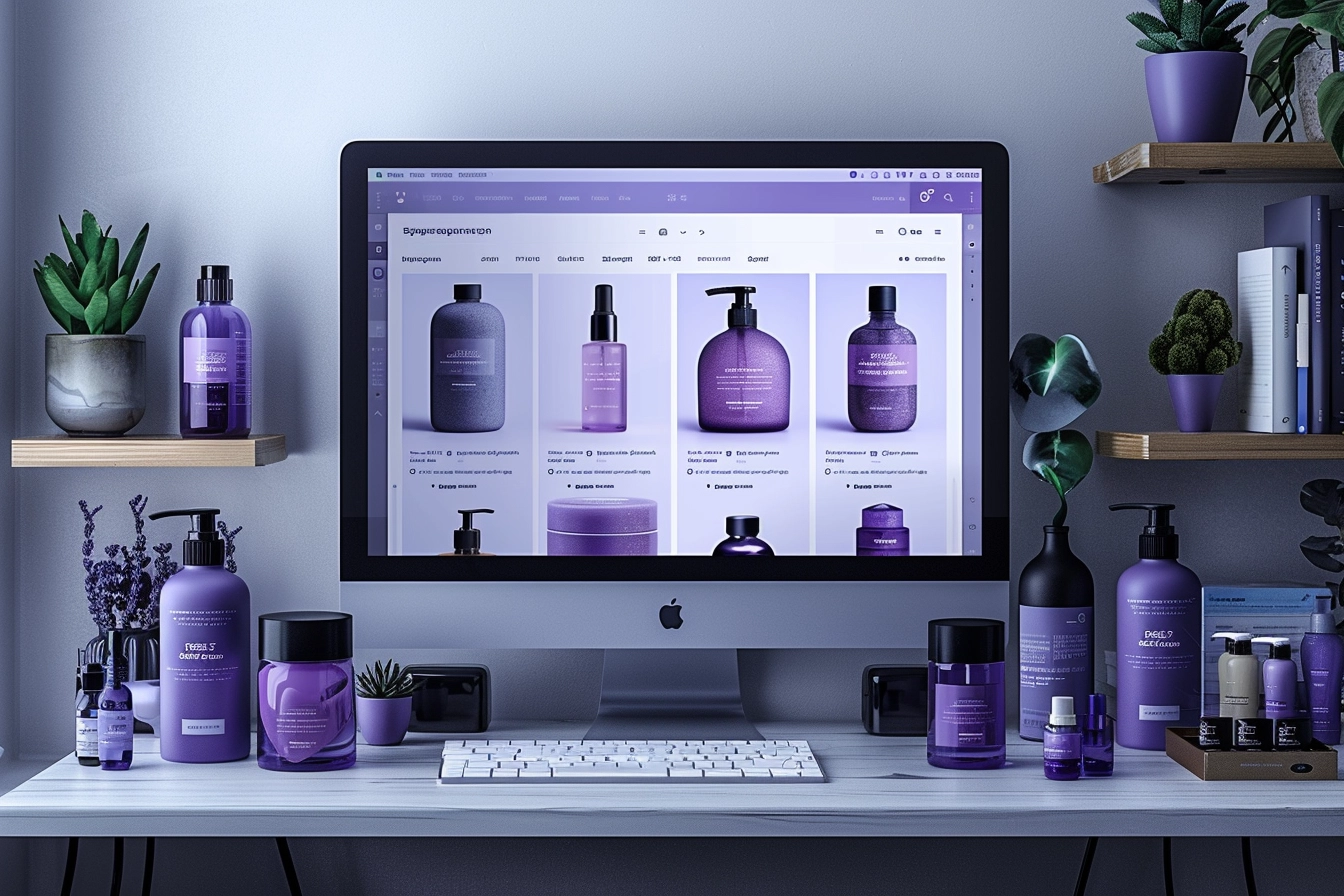For organizations looking to connect profoundly with their target audience in today’s cutthroat business environment, it has become essential to comprehend consumer psychology. A complex combination of emotions, perceptions, and cognitive processes underlies consumer behavior, which is not just a matter of personal preferences. To engage their audience and create enduring relationships, brands might uncover effective techniques by exploring the domains of consumer psychology.

The following six basic methods can help you include consumer psychology in your brand strategy:
1. Understand Your Audience Completely
The first step in developing a successful brand strategy based on consumer psychology is identifying your target audience. Here’s a more thorough explanation:
- Market Research: To get information about your target audience, including psychographics (values, attitudes, and interests), behavioral patterns (purchasing habits, preferences, and pain points), and demographics (age, gender, and income, among others), conduct thorough market research. To learn important information about the requirements and motivations of your audience, combine quantitative and qualitative research techniques in focus groups, surveys, and interviews.
- Analyzing Consumer Data: Examine customer data that has been gathered from a variety of sources, including sales records, social media indicators, and website analytics. To pinpoint important audience segments and comprehend their cross-channel behavior, look for patterns and trends. To help guide your brand strategy, find out which marketing platforms and messaging your target responds to the best.
- Building Buyer Personas: Construct thorough buyer personas that speak to various subsets of your intended market. Every persona should include goals, obstacles, interests, and preferred methods of communication in addition to demographic data. You may better understand the demands of your audience segments and adjust your brand messaging and offers by humanizing them.
- Customizing Experiences and Brand Messaging: Use buyer personas and market research data to inform how you craft brand experiences and messages that speak to the requirements and preferences of your target market. Create messaging that targets their goals, values, and areas of pain. Make sure that every touchpoint is consistent, starting with your website.
Investigate the creation of a cohesive brand experience:
- Constant Monitoring and Adaptation: As consumer tastes and habits change over time, it’s critical to keep an eye on your brand strategy and make necessary adjustments. To be aware of your audience’s evolving wants and preferences, routinely get feedback from them via surveys, social media listening, and customer feedback channels. To improve your brand strategy and stay relevant in the market, use data-driven insights.

Understanding your target market well and tailoring your brand strategy to suit their requirements and preferences will help you build deeper relationships, encourage brand loyalty, and promote long-term business growth.
2. Establish Emotional Bonds
Consumers make decisions based on their emotions. Brands have a greater chance of creating enduring bonds with their audience when they can arouse powerful, positive emotions in them. Here’s how to engage your audience on an emotional level:
- Recognizing Emotional Triggers: Determine which feelings most strongly connect with your intended audience. These feelings could include joy, contentment, enthusiasm, trust, sentimentality, or even a feeling of community. Find out which emotional triggers are most appropriate for your audience and brand by conducting research.
- Storytelling: Using stories to connect emotionally is an effective technique. Write engrossing stories that speak to the values, goals, and experiences of your audience. To emotionally connect with your audience, use storytelling on your website, social media accounts, advertising campaigns, and product packaging, among other touchpoints.
Learn effective storytelling techniques for branding:
- Authenticity: Establishing sincere emotional bonds with your audience requires authenticity. In your brand messaging and interactions, act sincere and open. Establishing credibility and trust can be achieved by presenting the human aspect of your business, revealing behind-the-scenes tales, and emphasizing actual client experiences.
- Visual and Creative Aspects: Appeal to your audience’s emotions by utilizing visual and creative aspects. Make use of imagery, color psychology, and design cues that evoke feelings. For instance, softer tones like blue and green may imply a sense of peace and trust, while warmer hues like red and orange might arouse sentiments of passion and enthusiasm.
- Personalization: Whenever feasible, adjust your experiences and message to each person in your audience. Personalized communications help customers feel appreciated and understood, which fortifies their emotional bonds with your company. Deliver offers, information, and suggestions that are tailored to the interests and preferences of each customer by utilizing data-driven insights.
- Continuity & Consistency: Establishing and sustaining emotional ties with your audience requires consistency. Make sure that the emotional messaging associated with your brand is maintained throughout all interactions and touchpoints. Over time, consistent branding builds trust and loyalty by reinforcing emotional associations.

You can build deeper connections with your audience, increase engagement, and set your brand apart from competitors in a congested market by giving emotional connections top priority in your brand strategy.
3. Make Use of Social Proof
People are strongly influenced by social proof, a psychological phenomenon, to adopt the behaviors or viewpoints of others. Social proof provides a sense of validation for brands by ensuring customers that their decisions are consistent with those of their peers. Here’s how to use social proof in your marketing strategy in an efficient manner.
- Customer Testimonials and Reviews: Include client endorsements and reviews on your website, product pages, and marketing materials. Real customer testimonials provide strong social proof, attesting to the worth and caliber of your goods and services. Make the procedure simple for happy customers to submit reviews and testimonials by offering incentives for participation when appropriate.
Know more about the role of customer feedback in branding:
- User-Generated Content (UGC): Invite clients to produce and disseminate content on social media sites that highlight your goods or services. In addition to showcasing actual experiences, user-generated content—such as images, videos, and testimonials—amplifies social proof by showing that other people are interacting with and recommending your company. Create customized hashtags and urge users to use them in their experience reports.
- Influencer Endorsements: You can greatly increase your social proof by collaborating with industry professionals or influencers who share your beliefs. Influencers are respected voices in their communities because they have loyal followers who rely on their advice and viewpoints. Work together with influencers to produce sponsored content, endorsements, or reviews that present your company to its audience in a genuine and approachable manner.
- Social Media Engagement: Take an active role in interacting with your audience on social media by answering questions, starting discussions, and leaving comments. Relationships are strengthened when satisfied customers are publicly thanked for their positive remarks. It also reinforces social proof for prospective consumers who are watching the exchanges. Emphasize encouraging remarks and endorsements in your social media postings to reach a larger audience using social evidence.
Explore the role of social media in branding:
- Trust Badges and Certifications: To reassure visitors of your legitimacy and dependability, prominently display trust badges, certifications, and affiliations on your website. Certifications from respectable institutions or trade associations act as third-party confirmations of the brilliance, dependability, and quality of your brand. To allay fears and boost conversions, place trust badges thoughtfully next to calls-to-action or on checkout pages.
- Popularity Indicators: To emphasize the appeal and popularity of your goods and services, use popularity indicators like “bestseller” labels, “most popular” lists, or “top-rated” badges. These cues encourage consumers to purchase by fostering a sense of scarcity and social approbation. Use data-driven insights to pinpoint and successfully market your best-selling items.

Effective use of social proof in your brand strategy will increase customer confidence, trust, and conversions—all of which will lead to increased engagement, sales, and brand loyalty.
4. Utilize Cognitive Biases
Cognitive biases are systematic patterns of judgmental deviation from rationality; they frequently arise from mental heuristics, or shortcuts, that the human brain employs to assimilate information quickly. Understanding and taking advantage of cognitive biases can be a very effective way to influence consumer behavior in the context of branding and marketing. Utilize cognitive biases in your brand strategy in the following ways:
- Anchoring Bias: When people base too much of their decisions on the first piece of information they are given (the “anchor”), this bias takes place. By carefully choosing price anchors or reference points, one can intentionally manipulate consumers’ perceptions of value in the pricing environment. Customers may find the discounted price more enticing if, for instance, the higher initial price was listed before the discount was applied. In a similar vein, providing a costly premium version of a product might inflate the price of the basic version.
- Confirmation bias: It is the propensity to ignore contradicting data in favor of information that supports pre-existing views or preconceptions. By matching their messaging to the preexisting beliefs or goals of their target audience, brands can take advantage of this bias. You may increase brand loyalty and create closer bonds with your target audience by reiterating associations and ideals that they can relate to. Craft tales that validate your target audience’s ideals and self-perceptions through content marketing and storytelling, and they will become more devoted to your business.
- Scarcity Bias: The propensity to place a higher value on items that are thought to be scarce or in limited quantity is known as scarcity bias. You may increase demand and boost conversions by evoking a sense of urgency or scarcity around your offerings. Offerings that are only available for a short period, first access to products, and “while supplies last” language can all capitalize on customers’ FOMO and spur them to action. To keep your audience’s confidence intact, you must utilize scarcity ethically and openly.

Through deliberate knowledge and utilization of cognitive biases including scarcity, confirmation, and anchoring bias, brands can exert a subtle yet significant influence on consumer perceptions and behaviors. You may use these biases to influence how decisions are made, boost sales, and improve the efficacy of your brand strategy as a whole. However, to keep your audience’s confidence and credibility, you must employ these strategies responsibly and morally.
5. The Power of Priming
Priming is a psychological phenomenon in which someone’s reaction to a stimulus affects how they react to another stimulus. Priming is a useful strategy in branding and marketing that can help you influence how customers view and feel about your company. The following are some ways to use priming in your brand strategy:
- Comprehending Priming: Priming relies on the associative memory principle, which states that mental associations or concepts are triggered by exposure to specific stimuli. Subsequent thoughts, feelings, and behaviors are influenced by these triggered concepts, frequently without conscious knowledge. Brands can influence consumers’ attitudes, responses, and perceptions in desirable ways by carefully presenting them with targeted stimuli.
- Verbal and Visual Priming: There are three different types of priming: verbal, visual, and semantic priming. Using pictures, symbols, or visual cues to elicit connections or feelings is known as visual priming. Verbal priming is the process of evoking concepts or ideas through language and words. Activating related notions using words or phrases that are semantically associated with the desired result is known as semantic priming.
- Strategic Imagery and Message: To affect consumer attitudes and perceptions, including priming strategies in your marketing materials, imagery, and brand message. Make use of language, images, and phrases that arouse feelings or favorable associations with your brand’s principles, advantages, or goods. One way to prime consumers to identify your brand with positive experiences and outcomes is to use photographs of happy customers.
- Contextual Priming: Adjust your priming strategies based on the setting in which customers meet your brand or merchandise. Use language or imagery that communicates exclusivity and elegance to prime buyers, for instance, if your business is known for its luxury and sophistication. Likewise, if the sustainability and eco-friendliness of your business are important to you, prime customers with images and language that highlight environmental stewardship.
- Cross-Channel Uniformity: Make sure that your priming strategies are uniform overall marketing channels and brand touchpoints. Reiterating brand associations increases the perception of the brand among customers through consistent priming. Keep your priming techniques consistent across all platforms—your website, social media accounts, advertising campaigns, and product packaging, for maximum impact.
- Ethical Considerations: Priming is a useful technique for swaying customer opinions, but it must be applied sensibly and morally. Steers clear of manipulative or misleading strategies that take advantage of customers’ weaknesses or violate their right to autonomy. Instead, concentrate on developing sincere and meaningful relationships with your audience by making priming efforts that are consistent with the goals and values of your brand.

You can sway customer attitudes, behaviors, and perceptions to further your business goals and objectives by utilizing priming in your brand strategy. By using strategic priming, you may improve the overall efficacy of your brand communication initiatives by evoking desirable emotions, building good connections, and more.
6. Using the Principles of Behavioral Economics
The study of behavioral economics integrates knowledge from economics and psychology to better understand how people make decisions in practical settings. Brands may create more appealing offerings and experiences that encourage consumers to engage in desired behaviors by utilizing behavioral economics principles. You can apply the following behavioral economics concepts to your brand strategy:
- Loss Aversion: The inclination for people to favor avoiding losses above achieving comparable rewards is known as loss aversion. You can take advantage of loss aversion in the branding environment by emphasizing possible losses in your marketing messaging rather than advantages. Customers can be encouraged to act by, for instance, stressing the benefits of taking advantage of your offer or the drawbacks of doing nothing.
- Limited-Time Offers: Using limited-time offers allows you to take advantage of another behavioral economics principle: scarcity. Limited-time offers have the power to hasten customer decision-making by instilling a sense of urgency or FOMO (fear of missing out). Limited-time offerings, such as flash sales, seasonal promotions, or exclusive deals, take advantage of customers’ inclination to seize a good opportunity before it’s gone.
- Choice Architecture: Creating a display of options to influence how decisions are made is known as choice architecture. Choice architecture is a tool that brands can use to steer customers toward their preferred choices or actions. For instance, carefully placing menu options or product displays might draw attention to items or promote upsells. Brands may boost conversions and customer satisfaction by streamlining options and structuring them in a way that encourages consumers to take desired actions.
- Default Options: Default alternatives are the pre-selected options that customers passively accept if they choose not to actively participate in the decision-making process. Through deliberate default setup, marketers can sway consumer behavior without limiting options. For instance, making opt-in features or automatic subscription renewals the default configuration might boost acceptance rates and encourage desired behaviors.
- Behavioral Reminders: Cues or suggestions that support actions or behaviors are known as behavioral reminders. Behavioral reminders are a useful tool for brands to encourage interaction with their goods and services or to reinforce desirable habits. For instance, you may encourage customers to finish their purchases or get back in touch with your business by sending them customized reminders for abandoned shopping carts or inactive accounts.
- Gamification: It is the process of introducing aspects of games, such as leaderboards, challenges, and awards, into non-gaming environments to boost motivation and engagement. Businesses can use gamification to reward desirable actions, such as finishing tasks, signing up for loyalty programs, or posting material on social media. Gamification may strengthen customer relationships and promote ongoing engagement by making brand interactions more pleasurable and rewarding.

Behavioral economics concepts can help you better understand and impact customer decision-making processes by integrating them into your brand strategy. Utilizing strategies like loss aversion, scarcity, default options, choice architecture, behavioral reminders, or gamification, among others, can assist promote desired behaviors, boost conversions, and ultimately improve the efficacy of your brand’s marketing campaigns.
In conclusion, consumer psychology is essential to brand strategy because it sheds light on the complex interactions between consumer behavior, perceptions, and decision-making processes. Through comprehension of the fundamental psychological concepts that shape customers’ interactions with brands, marketers may develop more impactful and successful approaches to establishing a connection with their intended audience.
Learn about the tips for building an iconic brand:
Consumer psychology provides useful tools and frameworks for creating engaging brand experiences, from realizing the significance of perception and emotions in marketing messages to utilizing cognitive biases and social influence principles. Brands may increase audience trust, loyalty, and advocacy by understanding their needs, focusing on the motives of their customers, and creating emotional connections.
Furthermore, brands may encourage meaningful interactions and steer consumers towards desirable behaviors by implementing behavioral economics concepts like choice architecture, scarcity, and loss aversion. Consumer psychology offers brands a wide range of tools to shape consumer perceptions and encourage participation, including priming tactics, gamification, and personalized messages.

Brands that integrate consumer psychology into their brand strategy get a competitive edge in today’s cutthroat market by giving their audience more memorable, relevant, and compelling experiences. Brands may create enduring relationships that withstand the test of time and promote sustainable growth in a constantly changing environment by giving priority to the wants, feelings, and behaviors of their customers.



